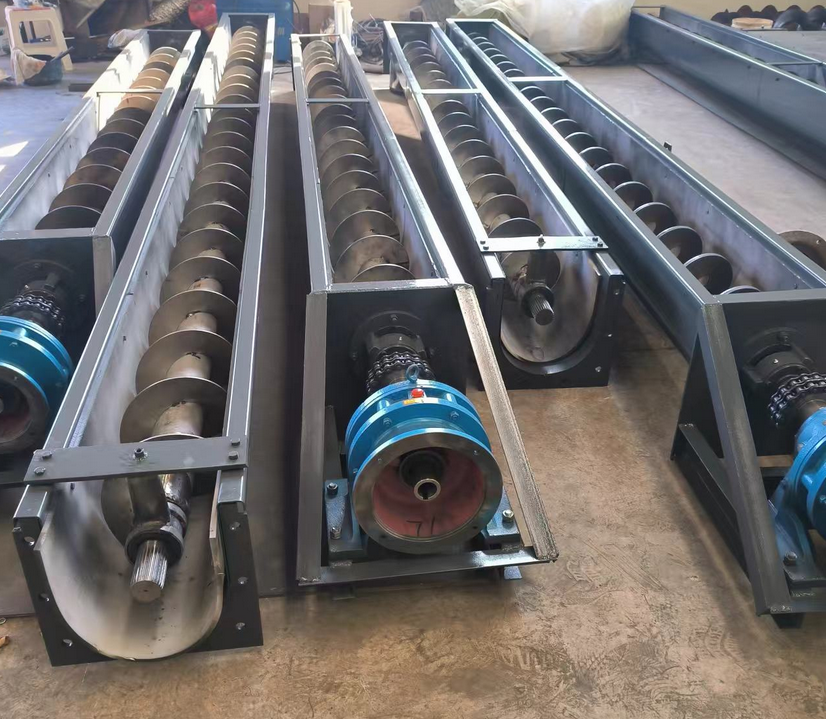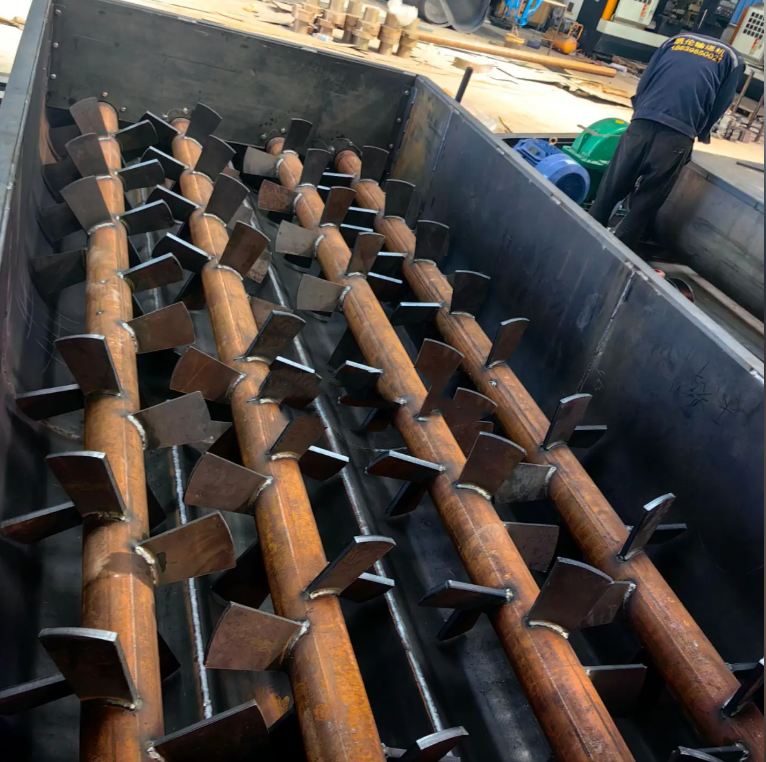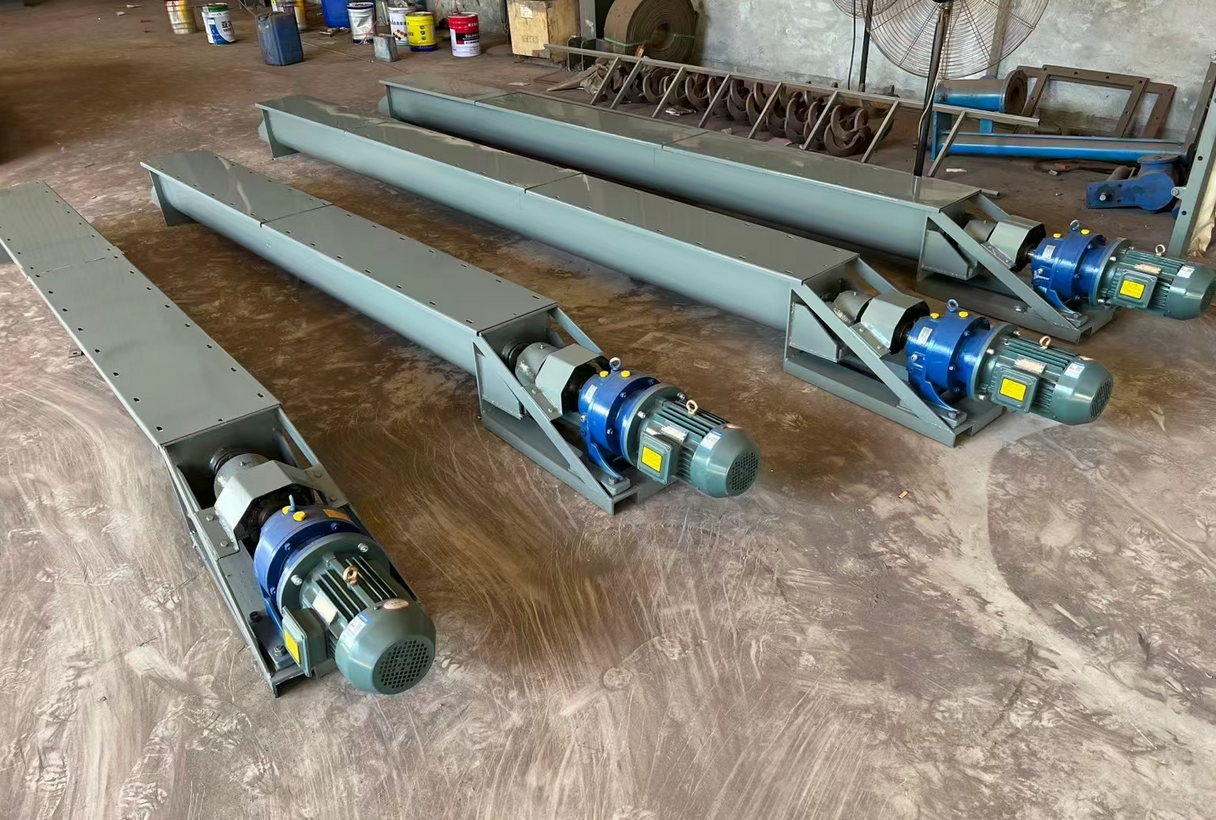
Whatsapp:+86 18339211009 Address: 1000 meters west of the gate of Yanjin County Forest Park, Xinxiang City, Henan Province.

Paddle Conveyors are a type of continuous conveying equipment widely used in the chemical, food, building materials and other industries. They use rotating paddles to push materials to achieve high-speed transmission. According to the structure and function, they are mainly divided into single-axis and double-axis types, which can meet the conveying needs of different materials. Whether it is light powder or viscous slurry, paddle conveyors can provide stable and reliable conveying solutions to help companies improve production efficiency. What types of Paddle Conveyors are there? Let's take a look.

The single-axis paddle conveyor builds a conveying system with a single main shaft as the core. On the main shaft, paddles are welded at equal intervals. The inclination angles of these paddles are usually adjustable between 15° and 60°. By adjusting the paddle angle, it can flexibly adapt to the conveying needs of different materials. The barrel diameter of the equipment is generally 200-600mm. In order to ensure the stability of conveying and prevent the main shaft from bending and deformation, its length is usually controlled within 15 meters.

When working, the motor drives the main shaft to rotate, and the paddles rotate accordingly, pushing the material to move in the conveying trough. Due to its relatively simple structure, the single-axis paddle conveyor has a low cost, 30% - 40% lower than the double-axis paddle conveyor, and has fewer bearings and 50% fewer lubrication points, making it very easy to maintain. It is suitable for conveying lightweight powders with a density of less than 0.8g/cm³, such as flour, milk powder, etc.; in scenarios where the conveying distance is short (less than 10 meters) and the material is non-sticky (water content <15%).
The double-axis paddle conveyor adopts a design of synchronous counter-rotation of two parallel shafts, and the paddles on the two shafts are staggered. This unique structure is the key to its performance advantage. The equipment is also equipped with an adjustable liner, and the liner gap can be controlled at 2 - 5mm to effectively prevent material jamming.

During operation, the reverse rotation of the two shafts enables the paddles to not only push the material forward, but also fully stir and loosen the material. Compared with the single-axis paddle conveyor, its conveying efficiency is increased by 40% - 60%, and it has self-cleaning ability to eliminate material residues. For this reason, double-axis paddle conveyors are suitable for handling high-viscosity materials such as sludge and syrup; they are also commonly used for long-distance (greater than 15 meters) transportation and transportation of easily agglomerated materials. If necessary, crushing functions can be added.
In addition to the common single-axis and double-axis paddle conveyors, there are some special types to meet specific industrial needs. For example, the explosion-proof paddle conveyor is designed for dangerous environments with flammable and explosive gases or dust. It uses explosion-proof motors, explosion-proof electrical components and special sealing structures to prevent sparks from causing explosions during equipment operation. It has important applications in the chemical, petroleum and other industries.

The paddle conveyor has the dual functions of mixing and conveying due to its unique paddle design. It can handle powders, particles and viscous materials with a uniformity of more than 98%.

Integrating conveying and mixing: It can simultaneously realize the conveying and mixing of materials, simplify the process flow and save equipment investment.
Good mixing effect: The special design of the paddles allows the materials to be fully stirred and mixed during the conveying process to ensure the uniformity of the mixing.
Heating or cooling can be performed: The material can be heated or cooled by passing a hot or cold medium through a hollow paddle or a casing jacket.
We can combine the following points when choosing a paddle conveyor.

Material form: For light powders, such as flour, milk powder, etc., a single-axis paddle conveyor can usually meet the requirements. If it is a high-viscosity material, such as sludge, syrup, or a material that is easy to agglomerate, a double-axis paddle conveyor is more suitable.
Material density: Both single-axis and double-axis paddle conveyors can handle materials with lower density, but materials with higher density may require a double-axis paddle conveyor to provide greater conveying force.
Material humidity: Single-axis paddle conveyors can handle non-sticky materials with low moisture content (<15%). For materials with higher humidity and greater viscosity, double-axis paddle conveyors are suitable.
Conveying distance: When conveying over short distances (<10 meters), single-axis paddle conveyors are more economical. For long-distance conveying (>15 meters), it is recommended to choose a double-axis paddle conveyor, which has a higher conveying efficiency.
Conveying capacity: If the required conveying capacity is small, between 1 - 20m³/h, a single-axis paddle conveyor can meet the requirements. If the conveying capacity is large, reaching 5 - 50m³/h, a double-axis paddle conveyor is a better choice.
NOTE: You can also send a message to us by this email sale@xxdahan.com, we will reply to you within 24 hours. Now tell us your needs, there will be more favorable prices!